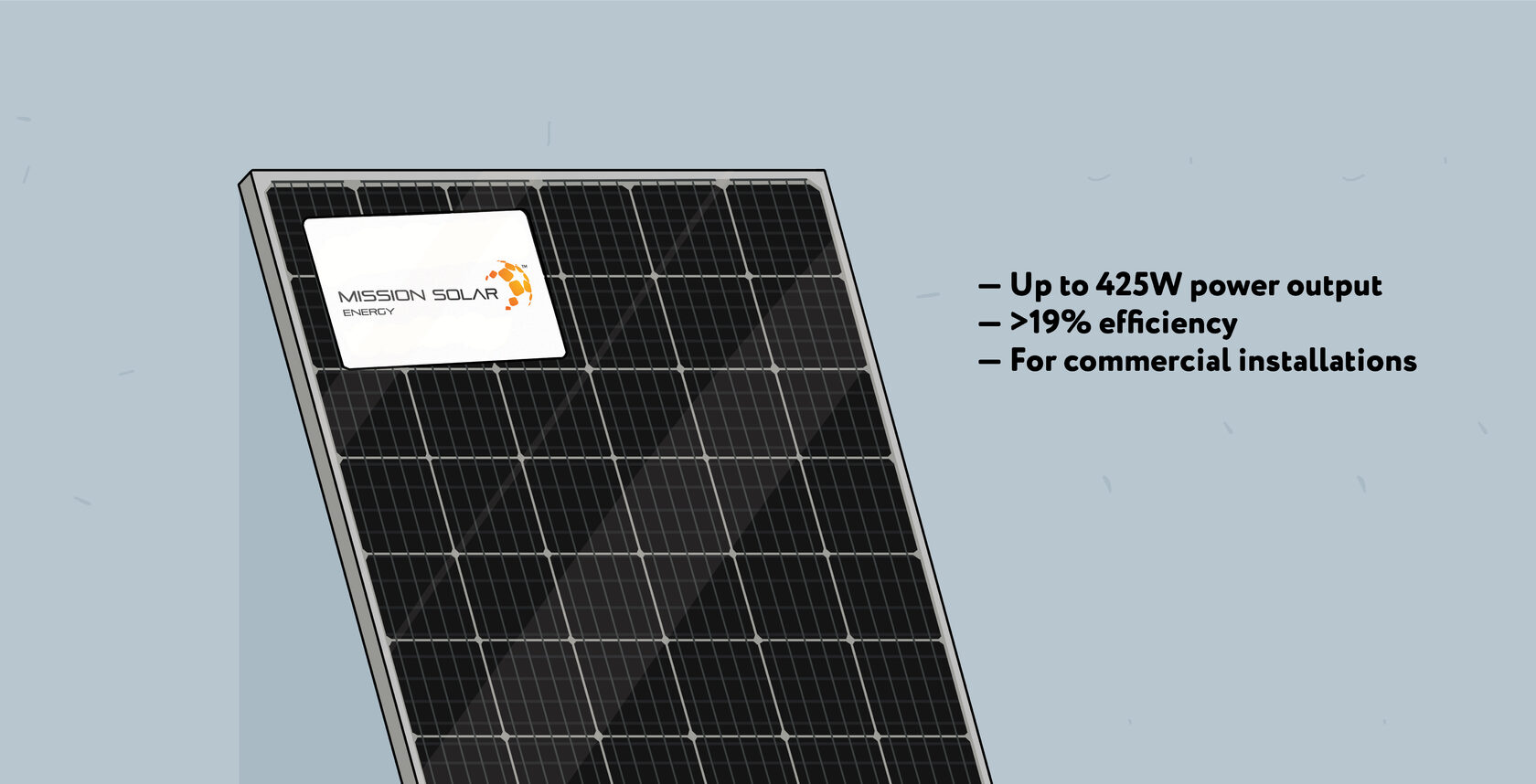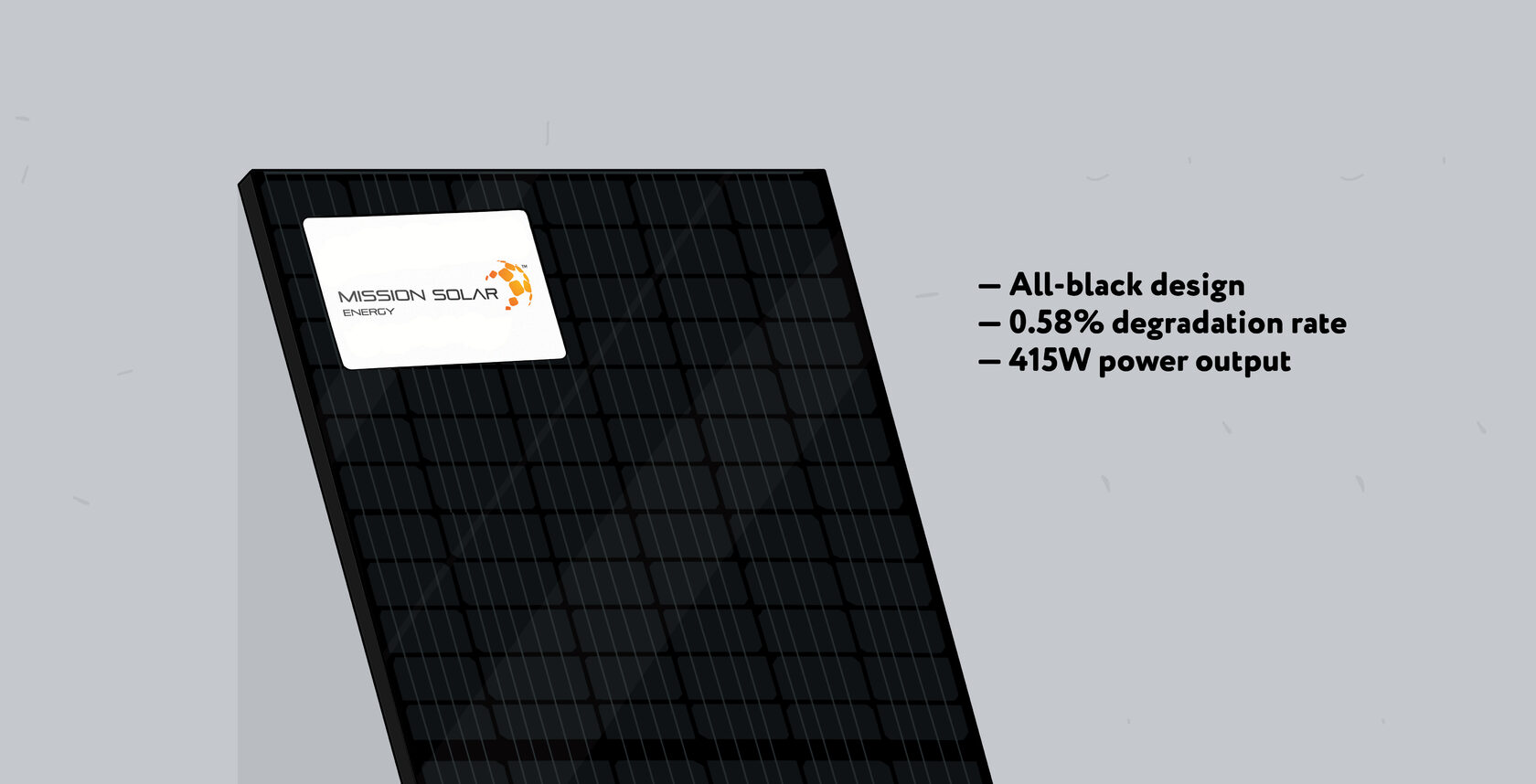Chinese solar panels dominate the market and it’s hard for other countries to keep up. However, when some brand manages to make a competitive product, it’s always a pleasure to examine it. Especially when it’s made by your countrymen: we’ve got our hands on American PV modules from Texas this time! Let’s look at them together and discuss their strong and weak points – here comes our Mission Solar panels review.
Key takeaways
- Made in San Antonio, Texas - all panels produced locally since 2014
- Quality tested and very durable - can handle 215 mph winds
- Panel efficiency is 19-22%, which is quite average
- Domestic manufacturing can make Mission Solar panels eligible for extra tax credits.
Mission Solar strengthens American PV market
Mission Solar is one of the rare companies that make its monocrystalline solar panels in the United States and uses a local workforce. All of Mission Solar’s products are manufactured in San Antonio, Texas. When there are no Chinese solar panels in the country — the supplies have been delayed or the trade is not going well — we always have Mission Solar panels in stock.
The company celebrated its 10th anniversary in the solar business in 2024. Despite being a small-scope manufacturer, Mission Solar has already collected lots of positive reviews for their products. Let’s look at the specifications of their panels closely.
Mission Solar panels: You always get what you pay for
Mission Solar claims to make panels for residential, commercial and utility-scale use. Their PV modules can be used for RV and boat installations as well.
18%-21%
efficiency
The efficiency of Mission Solar panels can be considered a weak spot of their product and leaves much to be desired. It ranges from 18% to 21%, depending on the model. These numbers aren’t straight up bad, but it’s nowhere near the top rates of Chinese competitors. However, Mission Solar engineers have incorporated busbars and PERC (Passivated Emitter Rear Contact) cells into their product which at least shows a lot of promise: the company is willing to use modern technologies to make their photovoltaics as competitive on the market as possible.
Perform in the real world even better than under test
Quite a lot of Mission Solar panels reviews praise the quality of their panels. Indeed, according to the company’s engineers, every module undergoes rigorous testing and thorough examination before it’s shipped. Notice the power tolerance of every model: -0/+3%. It means that a panel performs in real-world conditions just as well as it does under Standard Test Conditions or even up to 3% better. Evidently, with Mission Solar you at least always get what you pay for.
Withstand 210 mph wind or category 5 hurricane
Mission Solar panels show great resilience: 40mm aluminum frame makes panels strong enough to be able to endure 5600 Pa front load and 4800 Pa back load. In other words, these PV modules can withstand 215 mph winds in test conditions. After all, Texans know what a good tornado is and they made sure that their panels are prepared for it.
The prices for American-made panels are very affordable. Overall, Mission Solar PV modules can still be considered budget-friendly, middle-of-the-price-range solar panels. Chinese modules are cheaper and even Canadian Solar prices are just a bit lower, but Mission Solar makes up for it by bringing great quality.
Over 81%-84% of rated power output after 25 years
The standard product warranty for Mission Solar panels is 12 years which can be extended to 25 years for some panels. On top of it, the company issues a 25-year performance warranty. After 25 years in service, PV modules should retain around 81%-84% of their initial power output. The extension option for product warranty is certainly nice and overall Mission Solar warranties look alright for the industry. Degradation rates could certainly be lower though.
Since Mission Solar is a USA-based company, it should be easy for American citizens to receive quality customer support and discuss the warranty conditions and terms, if needed. The product undergoes a series of tests before it goes out, quality reviews look good and overall we see no reasons to worry about possible issues with Mission Solar panels or with getting warranty support. Mission Solar panels qualify for ITC (Solar Tax Credit) and PTC (Production Tax Credit) and are even eligible for additional credit percentages in the US because of domestic manufacturing.
Mission Solar panels: Pros
We’ve covered a lot about Mission Solar panels already. To simplify the data and organize it better, let’s list down their advantages and disadvantages, starting with all the positive things.
• High quality. Panels undergo a series of tests and quality checks and so far they collect positive reviews.
• Affordable pricing. $0.70-$0.80 per watt puts Mission Solar in the middle of the industry price range.
• Great durability. Panels can withstand 5600 Pa front load which makes them great for areas where extreme weather conditions are a problem.
• Positive power tolerance of -0/+3%. Panels perform at least as good as promised.
• Good design. While some models may look simple, others prove that Mission Solar engineers care about the appearance of their product and try to make solar energy look modern and cool.
• American production. Say what you want, but it is nice to know the product that you use was made by the people you live and talk with.
Mission Solar panels: Cons
While the advantages of Mission Solar panels are numerous, the cons also have to be listed down.
• Low efficiency. 18%-21% conversion rate is fine by itself, but Chinese panels do more in that regard.
• Average degradation rates. A Mission Solar p-type panel generally loses around 0.7%-0.8% of its power annually. The numbers don’t look too good – there are several brands which can do better.
• Shallow product line. Currently Mission Solar has only three models to offer on their website. Hopefully, this will change as the enterprise develops further.
Mission Solar panels overview: home and business
As usual, we’ve asked our engineer to take a look at what Mission Solar actually makes at its factory in Texas. Here are three models that are the frontrunners of Mission Solar entrance on the solar market.
MSE PERC 60 WHT – Simple choice for your home

This is the simplest panel for residential use that Mission Solar offers. A 60 cell white back sheet PV module with a 325 Watt power output is engineered with PERC technology, which improves the energy harvest of a module. Multiple quality checks and stringent reliability testing ensure that the customer gets a product that will last for decades.
MSE PERC 72 – Time for business

This particular model is best suited for commercial systems and utility-scale installations. The look might be a little generic, but the panel does provide a lot of energy – from 405W to 425W, depending on which one you choose. It features PERC technology and five busbars to provide >19% module efficiency rating.
You can find Mission Solar 415W panel in our store and order it straight away if it’s available.
Mission Solar 415W Solar Panel 144 Cell – The look and the power

MSE PERC 72 provides commercial solar-level power output, but at the time looks amazing. It’s ideal for all applications. The module shows 18.9% efficiency, has 6 busbars in its construction as well as PERC cells. This particular model has a better degradation rate than other Mission Solar panels: the module loses only 0.58% of its output annually so you end up with about 84% of its rated power in the year 25. Homeowners will appreciate the all-black design of this model.
A1 SolarStore recommends Mission Solar 410W Solar Panel MSE PERC 108HC

Mission Solar 410W Solar Panel 108 Cell MSE410HT0B Assembled in the USA Clearance
- Rated Power Output 410 W
- Voltage (VOC)37.41 V
- Number of cells108
- Cell TypeMonocrystalline
Delivery on Dec 22–26
The MSE PERC 108HC from Mission Solar is best for home systems. It looks fairly simple but the panel itself is the most efficient in the company’s product line. PERC cells increase the energy harvest of a panel and 10 busbars in construction improve the flow of electrons inside the module. The model includes variations for 400, 405 and 410 watts. Its degradation is guaranteed not to exceed 2% in year 1 and 0.055% annually from years 2 to 25 with 84.8% capacity guaranteed in year 25.
A1 SolarStore verdict: Proud American manufacturer
Let’s wrap our 2025 Mission Solar panels review by listing the key points:
• Mission Solar is an American company, founded in San Antonio, Texas, in 2014
• So far the product line is small: three models for residential, commercial and utility-scale use.
• The efficiency of panels is average: from 18% to 22%.
• Customers praise high quality of panels.
• PV modules have positive power tolerance -0/+3% – panels perform just as well as during testing or up to 3% better.
• Mission Solar are relatively inexpensive.
• Panels have great design and are very durable.
We can see that Mission Solar products lack in important aspects, like efficiency, degradation rates, and diversity of product line. So far there are brands on the market that can do the same things Mission Solar does, but better-stronger-cheaper. Mission Solar panels have great potential, already received a lot of positive feedback and we’re sure that they will become better and better. On that note we end our Mission Solar panels complete review – and we’ll be back with more of these.

Find your best solar panels!
Take a look at the brands we have in stock and get a quote for a system from our engineer.
Shop solar panels



 Panasonic solar panels review 2025: Old and gold
Panasonic solar panels review 2025: Old and gold




